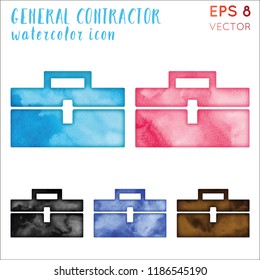Discover Just How Seasonal Influences Can Affect The Effectiveness Of Industrial External Paint And Figure Out The Most Positive Times To Make Sure Durable Results For Your Job
Discover Just How Seasonal Influences Can Affect The Effectiveness Of Industrial External Paint And Figure Out The Most Positive Times To Make Sure Durable Results For Your Job
Blog Article
Authored By-McLamb Browne
When you're preparing a commercial exterior paint job, seasonal variables can make or break your results. You'll intend to take into consideration exactly how temperature level and humidity influence paint application and drying times. Selecting the best period can guarantee your paint adheres correctly and lasts much longer. Yet which seasons are absolutely the best for this sort of work? Allow's explore the crucial elements that can impact your job's success.
The Influence of Temperature Level on Paint Application
When you're planning a business outside paint task, the temperature can dramatically influence how well the paint sticks and dries.
Ideally, you wish to repaint when temperature levels vary between 50 ° F and 85 ° F. If straight-line 's too chilly, the paint might not cure properly, leading to issues like peeling off or fracturing.
On the other side, if it's too warm, the paint can dry out also rapidly, avoiding proper bond and causing an irregular coating.
You need to also consider the moment of day; early morning or late afternoon offers cooler temperatures, which can be much more favorable.
Constantly check the producer's suggestions for the specific paint you're making use of, as they often supply support on the optimal temperature array for optimal results.
Moisture and Its Impact on Drying Times
Temperature isn't the only ecological factor that affects your business outside paint project; humidity plays a considerable duty as well. High moisture degrees can decrease drying times substantially, affecting the total high quality of your paint task.
When the air is saturated with dampness, the paint takes longer to cure, which can lead to issues like bad bond and a greater danger of mildew growth. If you're repainting on a particularly humid day, be planned for extended wait times in between layers.
It's important to monitor local climate condition and strategy appropriately. Ideally, go for humidity levels in between 40% and 70% for optimal drying out.
Keeping these factors in mind ensures your job remains on track and provides a long lasting coating.
Best Seasons for Commercial Exterior Painting Projects
What's the most effective season for your industrial external paint tasks?
Springtime and very early fall are commonly your best options. Throughout these periods, temperature levels are moderate, and humidity levels are commonly reduced, producing suitable conditions for paint application and drying out.
Prevent summer's intense heat, which can create paint to completely dry as well promptly, resulting in inadequate bond and coating. In a similar way, wintertime's chilly temperatures can impede correct drying out and healing, risking the longevity of your paint task.
Go for days with temperature levels in between 50 ° F and 85 ° F for optimum results. house painter golden valley in mind to check the local weather report for rain, as damp conditions can destroy your task.
Planning around https://www.npr.org/2022/09/07/1121281696/obama-portrait-white-house guarantees your paint task runs smoothly and lasts longer.
Verdict
To conclude, preparing your industrial external paint jobs around seasonal factors to consider can make a substantial difference in the result. By scheduling work during the suitable temperature levels and moisture degrees, you'll ensure much better adhesion and drying times. Remember to keep an eye on neighborhood weather forecasts and pick the correct time of year-- springtime and very early loss are your best options. Taking Recommended Reading will aid you accomplish a resilient and professional finish that lasts.
